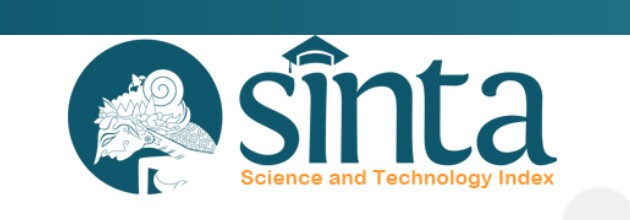BIOAKTIVITAS ASAM JAWA (Tamarindus indica) DAN PEMANFAATANNYA
Abstract
Full Text:
PDFReferences
Aravind, S.R., Joseph, M.M., Varghese, S., Balaram, P. and Sreelek, T.T. (2012). Antitumor and immunopotentiating activity of polysaccharide PST001 isolated from the seed kernel of Tamarindus indica: an in vivo study in mice. The Scientific World Journal ID 361382, 14 pages doi:10.1100/2012/361382
Azman, K.F., Amom, Z., Azlan, A., Esa, N.M., Ali, R.M., Shah, Z.M. and Kadir, K.K.A. (2012). Antiobesity effect of Tamarindus indica L. pulp aqueous extract in high-fat diet-induced obese rats. J Nat Med. DOI 10.1007/s11418-011-0597-8
Abubakar, M.G., Ukwuani, A.N. and Shehu, R.A. (2008). Phytochemical screening and antibacterial activity of Tamarandus indica pulp extract. Asian Journal of Biochemistry 3(2): 134-138.
Bhadoriya, S.S., Ganeshpurkar, A., Bhadoriya, R.P.S., Sahu, S.K., and Patel, J.R. (2017). Antidiabetic potential of polyphenolic-rich fraction of Tamarindus indica seed coat in alloxan-induced diabetic rats. J Basic Clin Physiol Pharmacol doi.org/10.1515/jbcpp-2016-0193: 1-9
Chong, U.R.W., Abdul-Rahman, P.S., Abdul-Aziz, A., Hashim, O.H., Junit, M.S. (2012). Tamarindus indica extract alters release of alpha enolase, apolipoprotein A-I, transthyretin and rab GDP dissociation inhibitor beta from HepG2 cells. Plos One 7(6): e39476. doi:10.1371/journal.pone.0039476
De Caluwé, E., Halamová, K., van Damme, P. (2010). Tamarindus indica L. A review of traditional uses, phytochemistry and pharmacology. Afrika Focus 23(1): 53-83.
Doughari, J.H. (2006). Antimicrobial activity of Tamarindus indica Linn. Tropical Journal of Pharmaceutical Research 5(2): 597-603.
Gumgumjee, N.M., Khedr, A. and Hajar, A.S. (2012). Antimicrobial activities and chemical properties of Tamarindus indica L. leaves extract. African Journal of Microbiology Research 6(32): 6172-6181.
Gao, T., Yao, H., Song, J., Liu, C., Zhu, Y., Ma, X., Pang, X., Xu, H. and Chen, S. (2010). Identification of medicinal plants in the family Fabaceae using a potential DNA barcode ITS2. Journal of Ethnopharmacology 130:116-121.
Iftekhar, A.S.M.M., Rayhan, I., Quadir, M.A., Akhteruzzaman, S. and Hasnat, A. (2006). Effect of Tamarindus indica fruits on blood pressure and lipid-profile in human model: an in vivo approach. Pak. J. Pharm. Sci. 19(2): 125-129.
Khalid, S., Mossadeq, W.M.S., Israf, D.A., Hashim, P., Rejab, S., Shaberi, A.M., Mohamad, A.S., Zakaria, Z.A. and Sulaiman, M.R. (2010). In vivo analgesic effect of aqueous extract of Tamarindus indica L. fruits. Med Princ Pract 19: 255-259.
Kobayashi, A., Adenarr, M.I., Kajiyama, S., Kanzaki, H. and Kawazu, K. (1996). Cytotoxic principle of Tamarindus indica, di-w-butyl Malate and the structure-activity relationship of its analogues. Z. Naturforsch. 51c: 233 -242.
Kuru, P. (2014). Tamarindus indica and its health related effect. Asian Pac. J. Tropica Biomed 4(9): 676-681.
Fandohan, B., Assogbadjo, A.E., Kakaï, R.G., Kyndt, T., De Caluwé, E., Codjia, J.T.C. and Sinsin, B. (2010). Women’s traditional knowledge, use value, and the contribution of tamarind (Tamarindus indica L.) to rural households’ cash income in Benin. Economic Botany 64(3): 248-259.
Luzia, D.M.M. and Jorge, N. (2011). Antioxidant activity, fatty acid profile and tocopherols of Tamarindus indica L. seeds. Ciênc. Tecnol. Aliment., Campinas 31(2): 497-501.
Martinello, F., Soares, S.M., Franco, J.J., Santos, A.C., Sugohara, A., Garcia, S.B., Curti, C., Uyemura, S.A. (2006). Hypolipemic and antioxidant activities from Tamarindus indica L. pulp fruit extract in hypercholesterolemic hamsters. Food and Chemical Toxicology 44: 810-818.
Nahdi, M.S. and Kurniawan, A.P. (2019). Ethnobotanical study of medicinal plants in karst environment in Gunung Kidul, Yogyakarta, Indonesia. Nusantara Biosci. 11(2): 133-141.
Nwodo, U.U., Obiiyeke, G.E., Chigor, V.N. and Okoh, A.I. (2011). Assessment of Tamarindus indica extracts for antibacterial activity. Int. J. Mol. Sci. 12: 6385-6396; doi:10.3390/ijms12106385
Nwodo, U.U., Ngene, A.A., Anaga, A.O., Chigor, V.N., Henrietta, I.I. and Okoh. A.I. (2011b). Acute toxicity and hepatotoxicokinetic studies of Tamarindus indica extract. Molecules 16: 7415-7427; doi:10.3390/molecules16097415.
Obulesu, M. and Bhattacharya, S. (2011). Color changes of tamarind (Tamarindus Indica L.) pulp during fruit development, ripening, and storage. International Journal of Food Properties 14: 538-549.
Prabhu, K.H. and Teli, M.D. (2014). Eco-dyeing using Tamarindus indica L. seed coat tannin as a natural mordant for textiles with antibacterial activity. Journal of Saudi Chemical Society 18: 864-872.
Razali, N., Mat-Junit, S., Abdul-Muthalib, A.F., Subramaniam, S., and Abdul-Aziz, A. (2012). Effects of various solvents on the extraction of antioxidant phenolics from the leaves, seeds, veins and skins of Tamarindus indica L. Food Chemistry 131: 441-448.
Sumarni, W., Sudarmin, S., Sumarti, S.S. (2019). The scientification of jamu: a study of Indonesian’s traditional medicine. J. Phys. Conf. Ser. 321: 032057.doi:10.1088/1742-6596/1321/3/032057.
Silalahi, M. and Mustaqim, W.A. 2020. Tumbuhan berbiji di Jakarta Jilid 1: 100 jenis-jenis pohon terpilih. UKI Press, Jakarta.
Silalahi, M. 2020. Gnetum gnemon L. Gnetaceae. In: Ethnobotany of the Mountain Regions of Southeast Asia, Ethnobotany of Mountain Regions. FM Franco (ed.). Springer Nature Switzerland AG 2020. doi.org/10.1007/978-3-030-14116-5_121-1
Shahraki, M.R., Harati, M., and Shahraki, A.R. (2011). Prevention of high fructose-induced metabolic syndrome in male wistar rats by aqueous extract of Tamarindus indica seed. Acta Medica Iranica 49(5): 277-283.
Article Metrics
Abstract has been read : 1608 timesPDF file viewed/downloaded: 0 times
DOI: http://doi.org/10.25273/florea.v7i2.7323
Refbacks
- There are currently no refbacks.
Copyright (c) 2020 Florea : Jurnal Biologi dan Pembelajarannya

This work is licensed under a Creative Commons Attribution-ShareAlike 4.0 International License.
Florea: Jurnal Biologi dan Pembelajarannya indexed by:



Copyright Florea: Jurnal Biologi & Pembelajarannya
View Florea Stats





